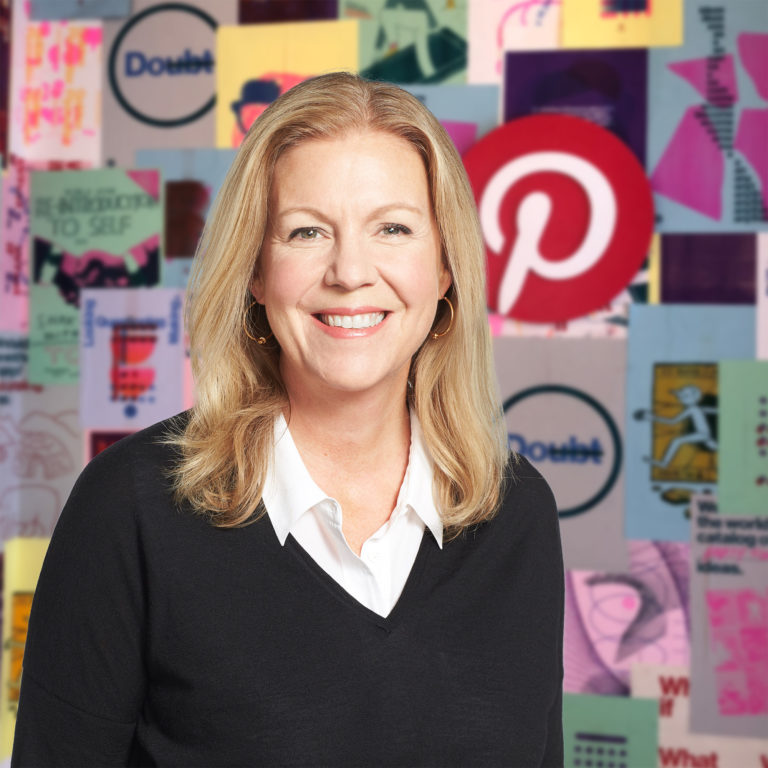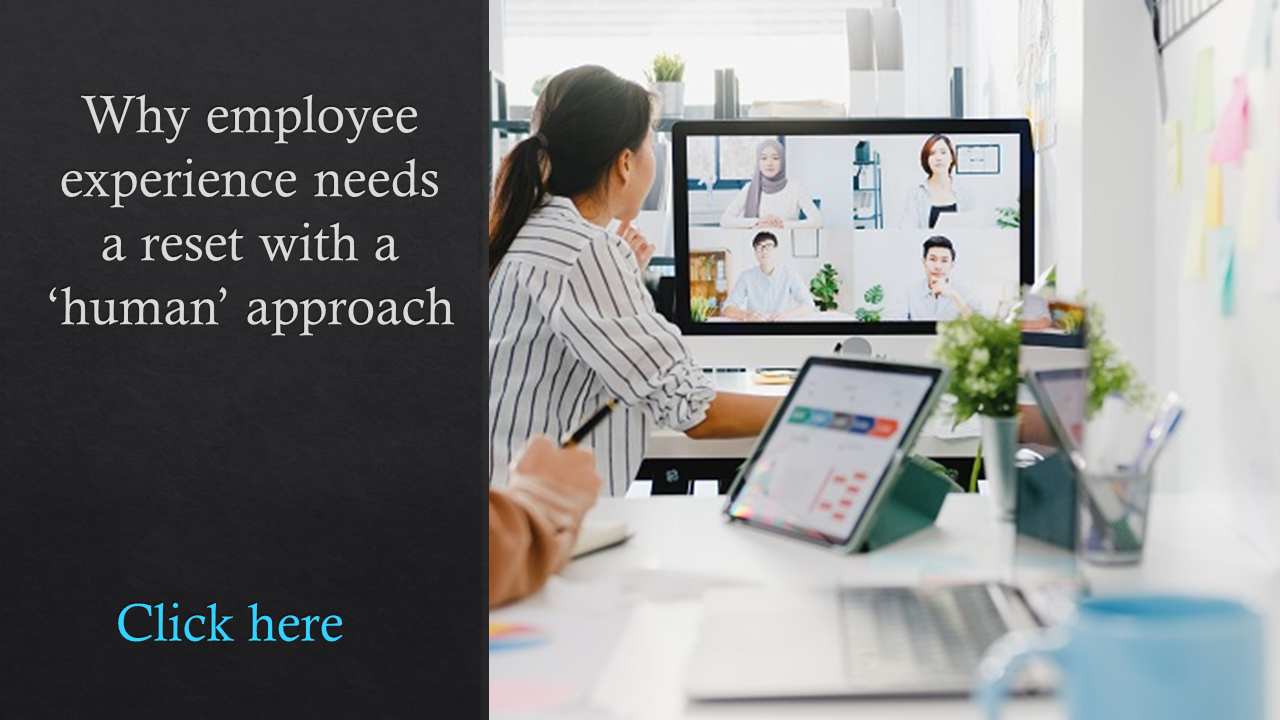Christine Deputy’s HR experience spans a range of industries—and the globe. Over the last three decades, she’s held HR leadership positions at Thomas Cook Group, Starbucks and Dunkin’, where she was the CHRO, as well as at U.K.-based entities like Barclays Bank and Aviva. She spent the previous six years helming HR for Nordstrom, where she led the organization’s COVID-19 response. This summer, she set her sights on a new challenge: chief people officer at social media platform Pinterest.
With nearly 500 million global users and 2,200 employees, the company is in a period of high growth—and Deputy is tasked with managing the subsequent people implications, from hiring to culture and everything in between. She recently spoke with HRE about her goals, challenges and outlook for her new role.
HRE: What was your first priority on day one at Pinterest?
Deputy: The first day was really about listening and learning. And I would say the first 30 to 60 days were about listening and learning. Joining Pinterest as a remote employee during COVID has been actually really great; we’ve had a lot of employees join in this way and now I’ve had the chance to experience it myself. I’ve been spending a lot of time doing Q&As, open forums and engaging with lots of data to understand our employee trends and sentiment and it’s been a lot of fun.
HRE: You helmed HR at Nordstrom throughout the height of the pandemic; what was one of the greatest HR lessons of that experience that you’ll bring with you to your work at Pinterest?

Christine Deputy
Deputy: I think that one of the biggest lessons we all learned as HR leaders in that environment was that having a really strong set of values and understanding what’s important about your organization, your leaders and your culture and being true to that when you make decisions—that had to become your true north in an environment we were faced with like COVID, which was absolute uncertainty. There was no precedent; even our own government was going in 16 different directions. So, the lesson that held very, very true was about being clear what you stand for, what’s important, as an organization and the relationship you have with your employees and your customers and using that as your true north—and when you are really clear about that, your people will better understand the choices you make. For Nordstrom, we had to put thousands of people on furlough but we made every effort to retain them and we did manage to bring the majority back. It’s because our communication was regular and consistent, and our employees were able to see that we were doing everything we could to support them during that time.
HRE: Pinterest has been the target of some criticism about its culture in recent months; what are the different facets of the work you’re going to be undertaking in this area?
Deputy: I think in every organization there are things we do really well and things we need to develop and get better skills and capabilities around. My big focus is to understand the core strengths of our culture, the things that make us great, and how have we been able to create an inclusive product and [become] a safe place on the internet—while, at the same time, [understanding] the growing pains that have challenged us. I’m working to understand the DNA of the business, the culture and the product and then, secondly, the systems and processes in place and where there are opportunities to improve them. And third, I’m thinking about, as we grow the organization so rapidly, the culture dynamics around leadership, engagement, development of people’s careers that we can improve upon to make them less biased, more effective and more inclusive so we can make sure we’re at our best more often—we’re always going to have stumbles—and have our best lead to inspiration.
 HRE: What role has the C-suite traditionally played in setting the culture at Pinterest? Do you see that shifting in the future?
HRE: What role has the C-suite traditionally played in setting the culture at Pinterest? Do you see that shifting in the future?
Deputy: I’ve done a lot of archeologic work to understand the history of the company, getting to know how the organization evolved at its core, and I found that senior leadership really created an environment to live the culture—things like Knit Con, which is a one-day event where everybody in the company comes together to share their passions, as well as things we do around Halloween and the Christmas holidays. There’s this very energetic, collegial environment where people are doing the work but sharing their passions—which may be very different than their work. This was happening organically and the leadership was engaged in the process in a very non-hierarchical environment.
See also: How Pinterest is getting its remote workers moving
Then we went through a whole transformation during COVID where we were suddenly in this very remote environment. We’ve also been growing very, very fast—we added almost 1,000 employees during 2020—and I think that growth in this remote environment made us learn that our leaders needed to create more of a system, a process to translate that culture more effectively. So, we’re working hard to bring that to life in this remote environment until we can bring everyone together.
HRE: What is Pinterest’s plan for remote and hybrid work?
Deputy: Right now, we have our offices available to individuals who want to go in, up to 15% capacity. We are just finalizing and starting to roll out our principle-based approach to the future of work. This will be processes around role clarification and role classification—based on roles, we’ll classify people as flexible, in-office or fully remote. Then, we’ll work with leaders to think about—for the fully remote, hybrid and flexible workers—how frequently to bring these groups together to interact and what kind of work they’re going to do together [in person]. But we don’t expect to be in the office in the near term until COVID numbers level out.
HRE: As a leader in tech, what responsibility do you think Pinterest has in helping to foster greater racial and gender diversity in the talent pipeline for the wider tech industry?
Deputy: Throughout my career, I’ve worked in a lot of different industries—insurance, banking, retail, fashion and tech—and there are different tools in every industry that HR has a tendency to get very narrow on. As I’ve gone from industry to industry, I’ve been able to see these tools more broadly. So, my opportunity now is to leverage this broader set of tools to say, “I believe we can create an environment and culture where people want to be and that reflects in the kind of product we want to create for our customer, which is highly inclusive and highly engaging.” Every role I’ve been in, I have seen it as an opportunity to show people how they can be treated with respect and dignity, how they should be developed and have their capabilities grown, and that they should be given choices and the ability to have transparency. Employees should know what to expect [from company culture], how to hold each other accountable and how to have a voice in the work they do. I’ve tried to build those principles into every employee environment I’ve had accountability for.
Read more Insights from a CHRO here.
HRE: If you hadn’t gone into HR, where do you think your career would have taken you?
Deputy: In the early days, I was in education so I might have stayed in that. I’m very optimistic about people’s ability to learn and grow and I personally believe a lot in the fact that we’re constantly growing and learning with every experience we have. I just took my son on college tours and it was a lot of, “I want to go back to college!” So, maybe I would have been a college professor. Learning just energizes me, which is probably why everywhere I’ve worked, I find that I come in and focus on learning how to get the best out of people.